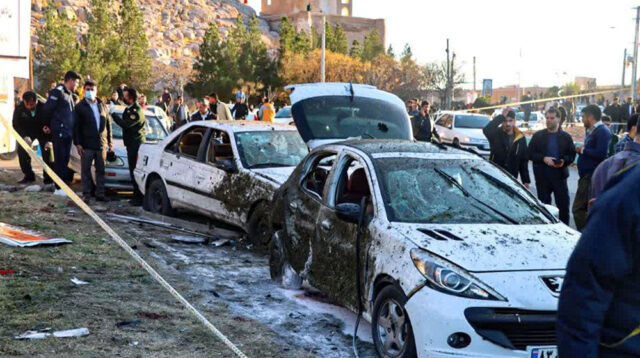
Brief: Iran Attacks Non-ISKP Targets in Retaliation for Kerman Bombing
Publication: Terrorism Monitor Volume: 22 Issue: 4
By:

Executive Summary
- Islamic State in Khorasan Province (ISKP) conducted two massive bombings at Qassem Soleimani’s grave on January 3, killing over 90 people and injuring 300 others. The attack was the deadliest terrorist incident in Iran since 1979.
- Iran and its proxies retaliated against many groups that have nothing to do with ISKP, including alleged Mossad assets and anti-government jihadists in Syria.
On January 3, Islamic State in Khorasan Province (ISKP) conducted two massive bombings at Qassem Soleimani’s grave in Kerman, Iran. This came on the fourth anniversary of the US airstrike that killed Soleimani in Baghdad, Iraq. The target was a ceremony to commemorate Soleimani. ISKP’s attack killed more than 90 people and injured 300 others (Fars News Agency, January 9). This was the deadliest terrorist attack in Iran since the founding of the Islamic Republic in 1979. To operate in Iran, where ISKP does not have a strong foothold, the attackers allegedly used a suitcase and a trash bin to hide the bombs before their detonation. There are also reports, however, that suggest that the attack was instead a dual suicide bombing (Hawar News Agency, January 3). The attack also highlighted how two enemies—the United States and ISKP—have a common enemy in Iran. Even so, the respective enemies of one’s enemy can hardly be called friends in this case.
Iran attacked targets in retaliation for the ISKP attack that had little to do with ISKP itself. Tehran appears unable to track down a number of key Iran-based ISKP operatives it alleges were behind the attack beyond several “foreign terrorists” (Radio Free Europe/Radio Liberty, January 19). Rather, these “foreigners” are connected to Iran’s other enemies, including anti-government Islamist and jihadist forces in northwestern Syria and alleged Israeli Mossad targets in the Kurdistan region of northern Iraq.
As retaliation for the ISKP bombings, for example, on January 15, the Islamic Revolutionary Guards Corps (IRGC) claimed it attacked “US assets” in Erbil, Iraq. This was understood to refer more precisely to Mossad (Muqawamology, January 15). Pro-IRGC Telegram channels, for example, asserted that Mossad operatives were killed in the Erbil attack (amwaj.media, January 15). The IRGC likely targeted the purported Mossad base in retaliation for Israeli airstrikes on Syrian territory that killed Iranian commanders (amwaj.media, December 25, 2023).
The psychological impact of ISKP’s Kerman bombings was significant. For example, when the IRGC targeted Turkistan Islamic Party (TIP) jihadists in Idlib, northwestern Syria, the IRGC wrote “Kerman” on the missiles it launched (X/@war_noir, January 16). Thus, Iran retaliated for the ISKP bombings by ostensibly attacking two other, unrelated enemies—Israel and the al-Qaeda-aligned Uyghur TIP. Beyond Iran and the IRGC itself, Iran’s proxy in Yemen, the Houthis, installed posters of Soleimani on a ship they hijacked in the Red Sea in November. These posters were only featured in a video posted after ISKP’s Kerman bombings (X/@ShaykhSulaiman, January 20). This implied again that the Houthis’ series of Red Sea ship hijackings were intended, at least in part, to be a response to ISKP attacks on Iran. Iran’s militant networks, then, appear to blame the United States and Israel for ISKP’s bombing.
When Soleimani was killed in 2020, Iran promised a gradual retaliation rather than an immediate or one-off response (Anadolu Agency, January 3). More than four years later, reprisals from the IRGC, Iran, and the country’s proxies are continuing. In the most recent series of retaliatory attacks, Iran has targeted several organizations unlikely to be working together, such as Mossad and the TIP. From the perspective of the Islamic Republic, however, Mossad and the TIP are both enemies, as are the United States and ISKP.



